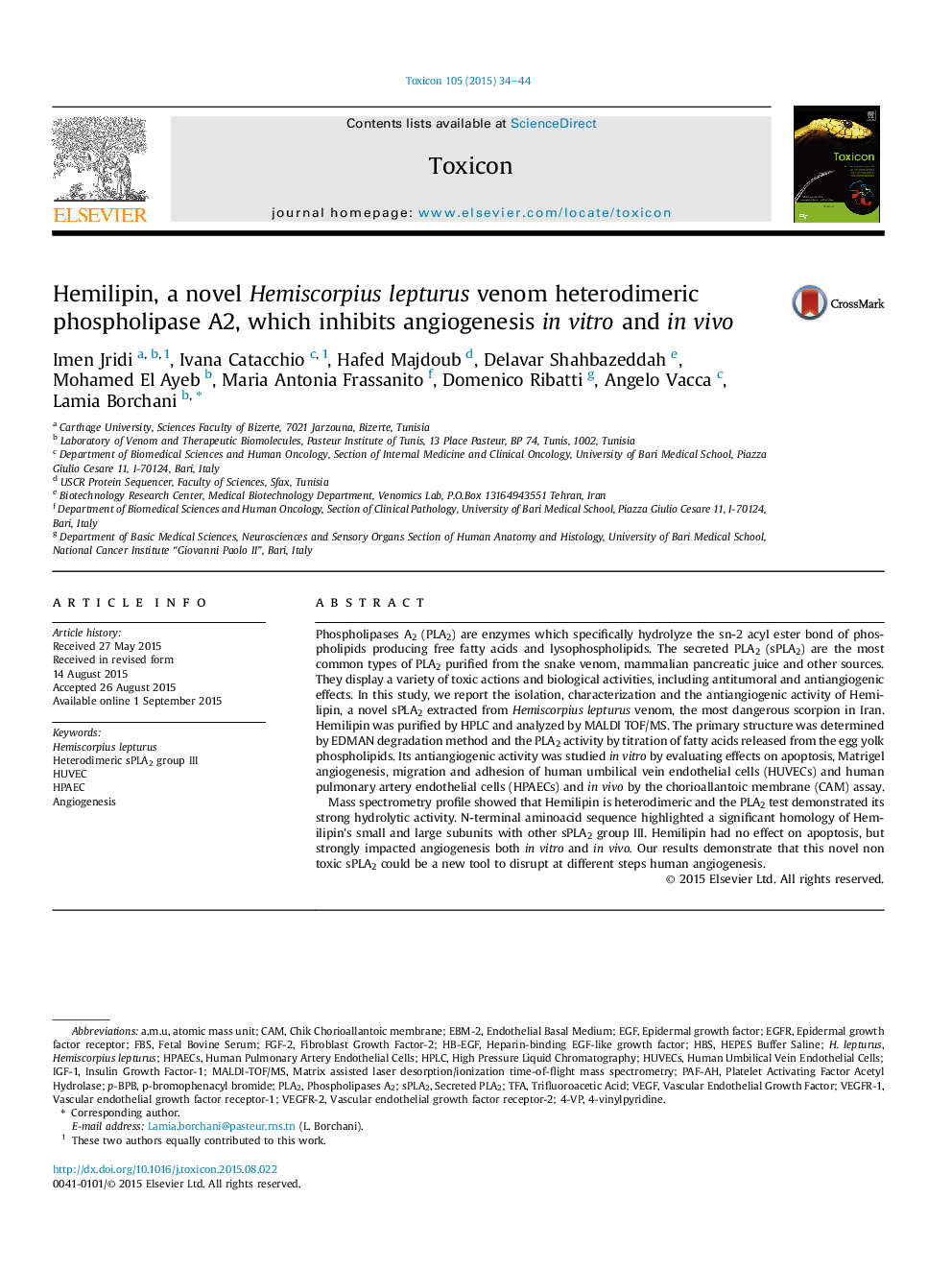| Article ID | Journal | Published Year | Pages | File Type |
|---|---|---|---|---|
| 2064307 | Toxicon | 2015 | 11 Pages |
•Hemilipin is the first heterodimeric secreted phospholipase A2 (sPLA2) purified from Hemiscorpius lepturus scorpion.•Hemilipin's small and large subunits show a significant homology with sPLA2s group III.•Hemilipin has no effect on HUVEC and HPAEC viability and apoptosis.•Hemilipin performs anti-angiogenesis activity, in terms of cell migration, adhesion and vessel length, and on CAM model.•Hemilipin reduces the levels of almost all angiogenic factors (growth factors, cytokines, and receptors) on EC.
Phospholipases A2 (PLA2) are enzymes which specifically hydrolyze the sn-2 acyl ester bond of phospholipids producing free fatty acids and lysophospholipids. The secreted PLA2 (sPLA2) are the most common types of PLA2 purified from the snake venom, mammalian pancreatic juice and other sources. They display a variety of toxic actions and biological activities, including antitumoral and antiangiogenic effects. In this study, we report the isolation, characterization and the antiangiogenic activity of Hemilipin, a novel sPLA2 extracted from Hemiscorpius lepturus venom, the most dangerous scorpion in Iran. Hemilipin was purified by HPLC and analyzed by MALDI TOF/MS. The primary structure was determined by EDMAN degradation method and the PLA2 activity by titration of fatty acids released from the egg yolk phospholipids. Its antiangiogenic activity was studied in vitro by evaluating effects on apoptosis, Matrigel angiogenesis, migration and adhesion of human umbilical vein endothelial cells (HUVECs) and human pulmonary artery endothelial cells (HPAECs) and in vivo by the chorioallantoic membrane (CAM) assay.Mass spectrometry profile showed that Hemilipin is heterodimeric and the PLA2 test demonstrated its strong hydrolytic activity. N-terminal aminoacid sequence highlighted a significant homology of Hemilipin's small and large subunits with other sPLA2 group III. Hemilipin had no effect on apoptosis, but strongly impacted angiogenesis both in vitro and in vivo. Our results demonstrate that this novel non toxic sPLA2 could be a new tool to disrupt at different steps human angiogenesis.
